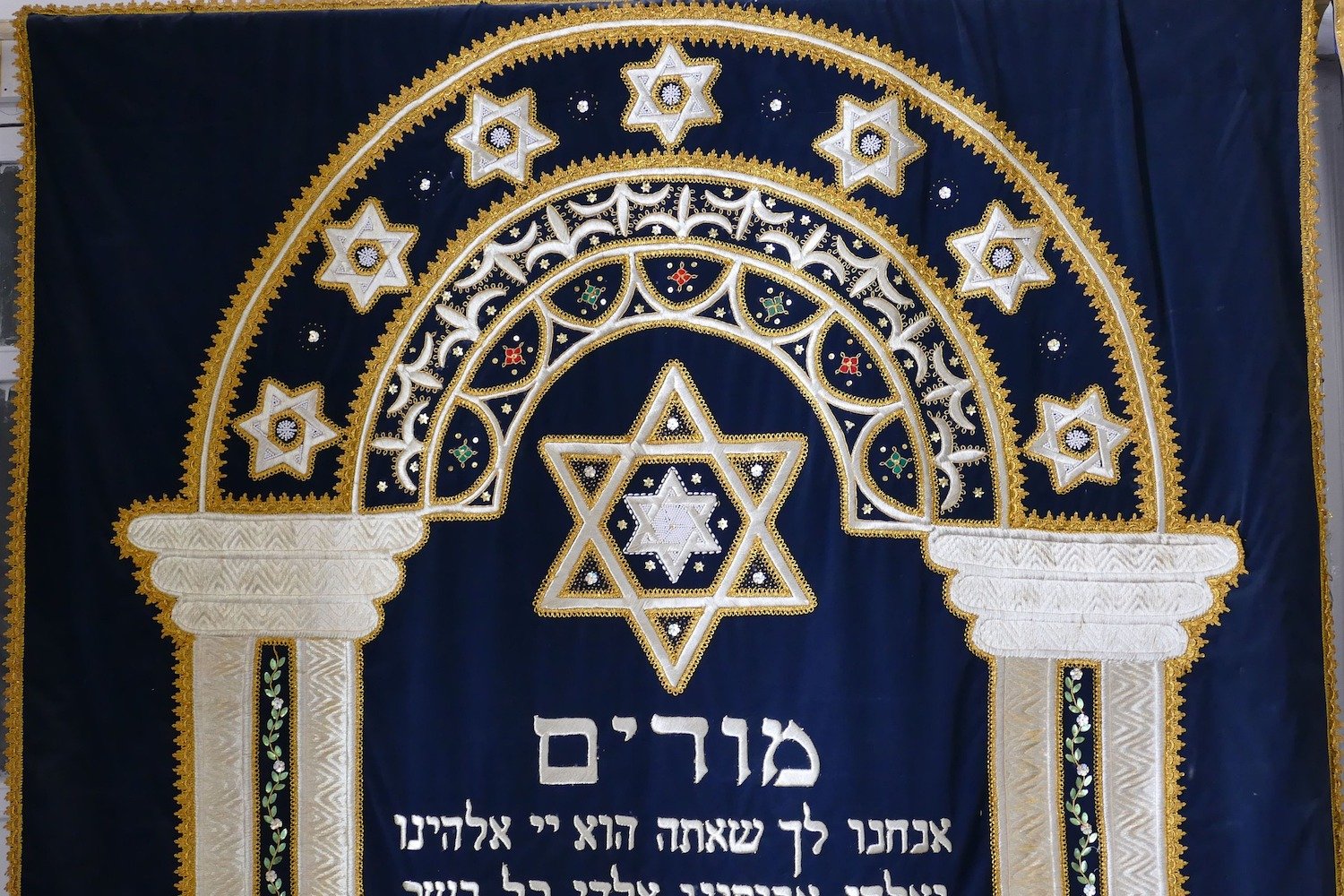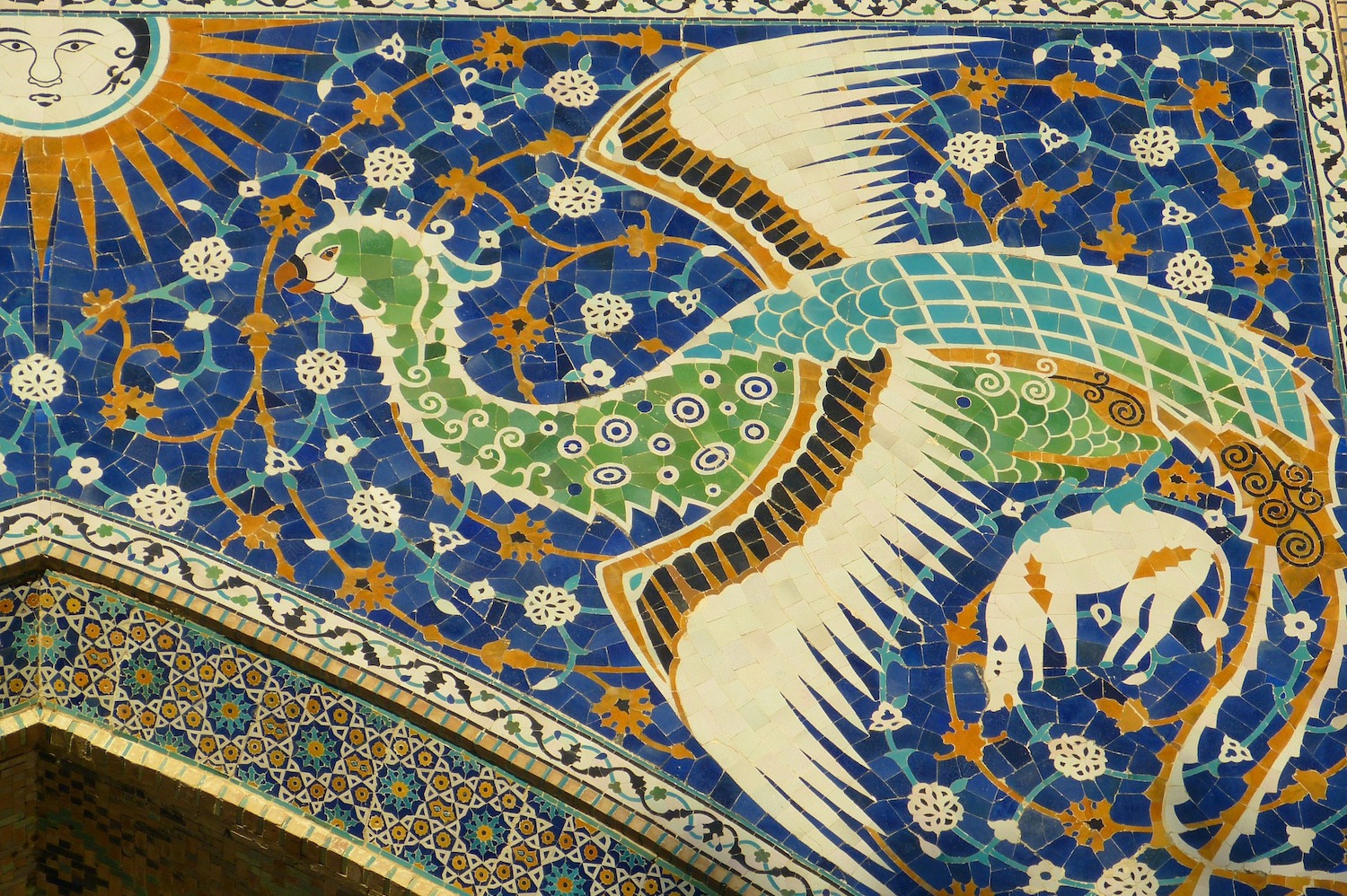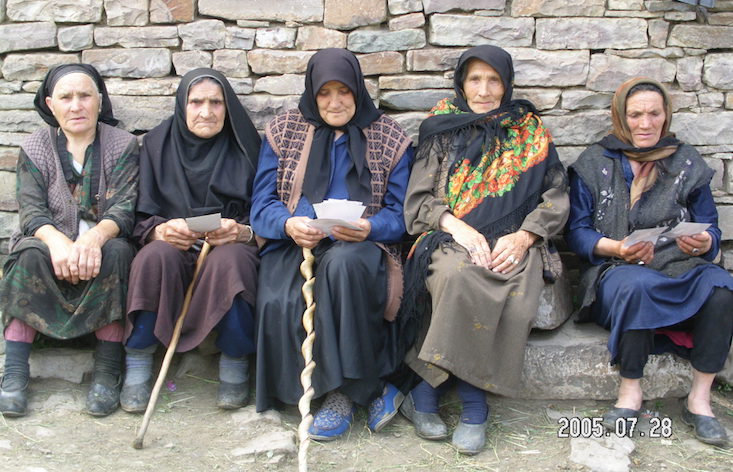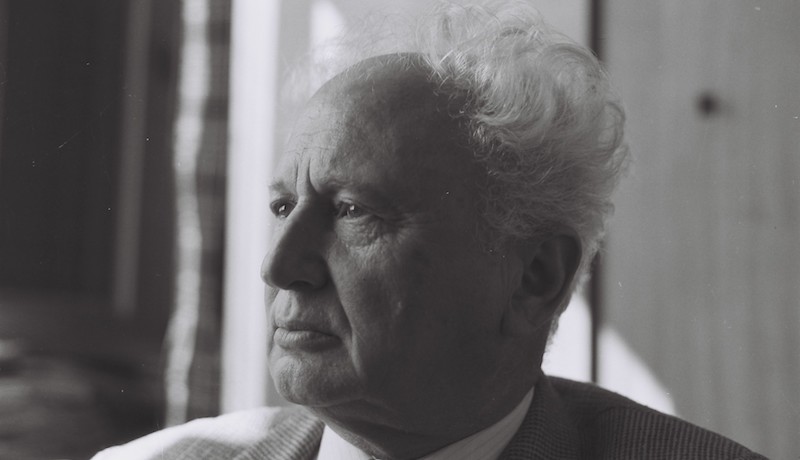Letter from Bukhara: finding the last vestiges of community in Central Asia’s Jewish heartland
In the 19th and 20th centuries, tens of thousands of Jews lived in the Uzbek city of Bukhara as part of a community that stretched back to the 6th century CE. But as Sharon Lurye finds, today the city’s Jewish presence has all but vanished, leaving those who remain fighting to preserve their culture.
We pulled into Bukhara just as dawn was beginning to break, painting a soft smear of orange over dusty brown plains. My family and I had flown 12 hours from America to the Uzbek capital of Tashkent, then rode another eight on the train as it trundled westward. Modern Bukhara is a city where modern features — gleaming train stations, construction cranes, concrete buildings – slot into place next to ancient monuments: an emir’s palace; medieval mosques; the Kalan minaret, so magnificent that even Genghis Khan could not bring himself to raze it to the ground. It is a city of winding, narrow backstreets hemmed in by stone, which open up into wide plazas where artists sell their wares.
Our journey to Uzbekistan in the spring of 2019 was part tourist trip, part homecoming. My sister’s boyfriend (now husband), Sam, was born in Tashkent, raised in Israel, and is now a US citizen. When he was given the chance to return home, he invited our family with him. My parents and I jumped at the opportunity, excited at the opportunity to see ancient history, to marvel at the Registan in Samarkand and to enter the immense 5th-century fortress, the Ark of Bukhara.
There was another reason for our stop in Bukhara. Sam is a Bukharan Jew — a term that refers to any Jew from Central Asia, rather than the city of Bukhara in particular. My family is Ashkenazi Jewish, hailing from St. Petersburg, Russia. We wanted to see this city, to see what was for centuries the centre of Jewish life in Central Asia.
Kalyan Minaret in central Bukhara. Image: Zuyet Awarmatik/Unsplash under a CC licence
Today the Jewish population in Uzbekistan, which numbered close to 100,000 in 1989, has plummeted to the low thousands. Almost every Jew in the Muslim-majority nation has emigrated, mostly to Israel or the United States. Fewer than 200 Jews are left in Bukhara itself. We wanted to find how much Jewish history we could still see in the city, delving into traditions of this community before it disappeared.
Bukharan Jewish history stretches back millennia. Some place its starting point at the destruction of the First Temple in Jerusalem and the subsequent exile of the Jewish people eastward to Babylon in 586 BCE. A few decades later, Cyrus the Great allowed Jews to return to Jerusalem, but some felt safe enough to travel farther east to the limits of the Persian empire. The oldest Hebrew inscriptions in Central Asia have been found in Merv, Turkmenistan, dating from approximately the 6th century CE.
But by the 19th century, popular imagination had come to see Bukharan Jews as some distant, backwater tribe in complete isolation from other Jews. As scholar Dan Shapira sardonically put it, missionaries of the era saw the community as “an exotic group of immense antiquity cut off from the rest of Jewry for ages, somewhere in the midst of savage Tartary.” An article in the Jewish Virtual Library claims that Jews from Odesa and Kyiv who fled to Bukhara in 1905 to escape violent pogroms in what was then the Russian Empire “were shocked at the primitive lifestyle of Bukharan Jewry.”
In reality, Central Asian Jews were deeply linked to the rest of the world, tied via Jewish scholarship to the Rabbinic authority of Baghdad and via trade to Spain, China, and the Caucasus. In the early Middle Ages, Jewish merchants called Radhanites travelled over land and sea as far west as France. Medieval Jewish communities flourished in Balkh in Afghanistan and Khorezm and Samarkand in Uzbekistan. Jewish musicians played in the courts of the emir, helping to develop the famous Uzbek national music style known as shashmaqam. Benjamin of Tudela, a far-travelling Sephardic Jew of the 12th-century, described Samarkand as a great city of 50,000 Jews, including “wise and very rich men.” There were revivals of literature in the Judeo-Persian dialect in the 14th century and again in the 19th century, thanks to Bukharian publishing houses in Jerusalem.
Even today, there is still Jewish history to be found throughout the city, though it may often be unmarked or unacknowledged. We start our journey in Bukhara at the Lyab-i Hauz complex, a stately, tranquil plaza consisting of a small pool flanked by 16th and 17th-century madrassas and a khanqah, lodging for Sufi travelers. Two Persian simurghs, resplendent phoenix-like creatures with sly smiling beaks and small animals clutched in their talons, swoop over the blue-tiled entrance to the Nadir Divan-begi Madrassa on the east side of the complex. On the west side, the reflection of the khanqah shimmers over a rippling pool; wind rustles willows and sways the blue curtains of the poolside teahouse.
Bukhara's Labi Hovuz Plaza. Image: Abdy Ta/Unsplash under a CC licence
According to local legend, the Divan-Begi — a title for a high-ranking official in the Bukhara Khanate — wanted to build this pool on property owned by a Jewish widow. However, she refused to sell her home. Jews had property rights as long as they paid the tax levied on non-Muslims, and he did not have the power to simply take her land. (The tax was paid in both money and humiliation as the tax collector ritually slapped Jews when they paid their dues.) Eventually, the Divan-Begi built a ditch near the widow’s house, so that water would start to ruin the foundations of her home. She finally relented and agreed to the sale — but only if the Khanate gave land to the Jews to build a synagogue.
That land became the Jewish quarter, and for centuries it remained a bustling and active centre of Jewish life in Bukhara. Rafael Elnatanov, chairman of Bukhara’s Jewish cultural centre and two other Jewish organizations in the city, remembers what the neighbourhood was like during his childhood in the Soviet 1970s. “Practically every house in the quarter was Jewish,” he said. “You got the impression that you lived in Little Israel.”
Today, it is a different story. Almost every Jew in Muslim-majority Uzbekistan has left the country, including two of Elnatanov’s own children. He estimates that there are around 150 ethnically Bukharan Jews left in the city, down from 18,000-25,000 in 1990. That number rises to about 500 Jews when you also count Ashkenazis and people of mixed Jewish heritage. “I still live in the same quarter, but you can count the Jews here on one hand,” he says.
The Jewish population of Bukhara actually rose in the early 20th century, as Jewish dissidents were deported from Russia and refugees fleeing the Holocaust in Europe congregated in the city. But the 70s, 80s, and 90s saw wave after wave of emigration, as Jews fled Soviet antisemitism and economic instability during the post-Soviet collapse. Many Jews also feared rising Islamic fundamentalism in Central Asia, although that fear did not come to pass in Uzbekistan. Elnatanov says local people and the government have a friendly attitude towards their Jewish neighbours.
“Many families would like to come back to Bukhara, considering the tolerant policy of the government, but they don’t want to start over again from scratch,” he says. He only knows of seven or eight families who have returned to Bukhara from Israel.
That evening, after we have sipped tea with Elnatanov and enjoyed platters of manti dumplings at a local restaurant, he guides us through the alleyways of the Jewish quarter to Ohel Yitzchak, one of two synagogues left in the city. “The synagogues are experiencing great difficulties. There’s no financing, no mohel [to perform circumcisions], no shochet [to prepare kosher meat], no people who are responsible for the rite of conversion,” he says. Still, there are enough Jewish men left for a minyan — the minimum number needed for certain communal prayers — every Friday.
Well over 100,000 Bukharan Jews live in Israel, and another 70,000 or so live in the United States. Some 50,000 in Queens, New York, alone. These communities are vibrant, young, and flourishing. But they are not here.
Entering through a heavy wooden door, we step out into a peaceful courtyard, hidden by stone walls from the outside world. There are no services tonight, but there is still an inviting coziness to the prayer hall. In front of the Ark there were cushioned chairs and tables to form a classroom for the men; women can watch proceedings through a lace curtain in the back. The Torah scrolls were kept safe behind wooden panels and a vibrant suzani cloth. On the walls there were framed photographs of Hillary Clinton’s visit to Bukhara in 1997 and pictures of bearded sages from 100 years past, a black-and-white testament to an era of religious vibrancy.
There remains some connection between Bukhara’s Jewish community and the many families who have now left the city. The next day, Raphael and his brother Emmanuel show us the Jewish cemetery, home to over 10,000 graves. We step through an intricately-carved wooden door to the central office, where framed posters commemorate 257 Bukharan veterans from the Second World War. Then we move through again to the cemetery itself, a city of stone tombs set against a bright blue sky.
Expatriates of Bukhara can still pay to keep their family’s gravestones in handsome condition. Some of these gleaming black headstones speak to the personality of the deceased so vividly that it is as though the dead are standing with us. One headstone might show a potbellied, smiling man plucking on a lute; on others, women in traditional jumah robes strike a pose from a shashmaqam dance. There are also poignant family portraits in dual graves: on one side a young man in an army uniform who died in World War II; on the other side, the mother who lived without him for the next fifty years.
I spot an elderly man pushing his peeling bicycle around the cemetery. Giving his name as Anisim, he says he walks around the graveyard every day except Saturday, to help with his asthma. Many of his relatives now live in America and Israel, and he also lived for some time in Queens, New York. He kisses the grave of his mother, and says of her generation, “They knew war, they knew hunger. Kids today play around.”
Elnatanov says the cemetery gets a small amount of funding for upkeep and reconstruction from Jewish donors abroad and from the city itself. The government appreciates that the site has historical value, and that it brings in tourists. But he is always looking for more funding to help support the remaining Jewish community, which is mostly elderly and poor. He runs a charitable centre that helps seniors, disabled people, and low-income families in Bukhara pay for medical care, food, and clothing.
But while the Jewish population is dwindling, it does not mean that the history of Bukharan Jews is coming to an end. Well over 100,000 Bukharan Jews live in Israel, and another 70,000 or so live in the United States. Some 50,000 in Queens, New York alone. These communities are vibrant, young, and flourishing. But they are not here.
Ultimately, the answer to how to preserve the history and traditions of Bukharan Jewish culture may lie outside of the place where the culture was born. It depends on the willingness of expat communities to continue passing on traditions to their children, and supporting those who remain in their ancestral home. Jewish history in Central Asia has always gone through waves of growth and decline, good fortune and catastrophe, all the while striking a balance between the forces of tradition and assimilation. As the next chapter of this history begins, Bukhara will remain as a monument to the chapters that came before.
“Culture, language, history,” says Rafael Elnatov, “I think it can all be preserved if we focus on those who are still left.”






